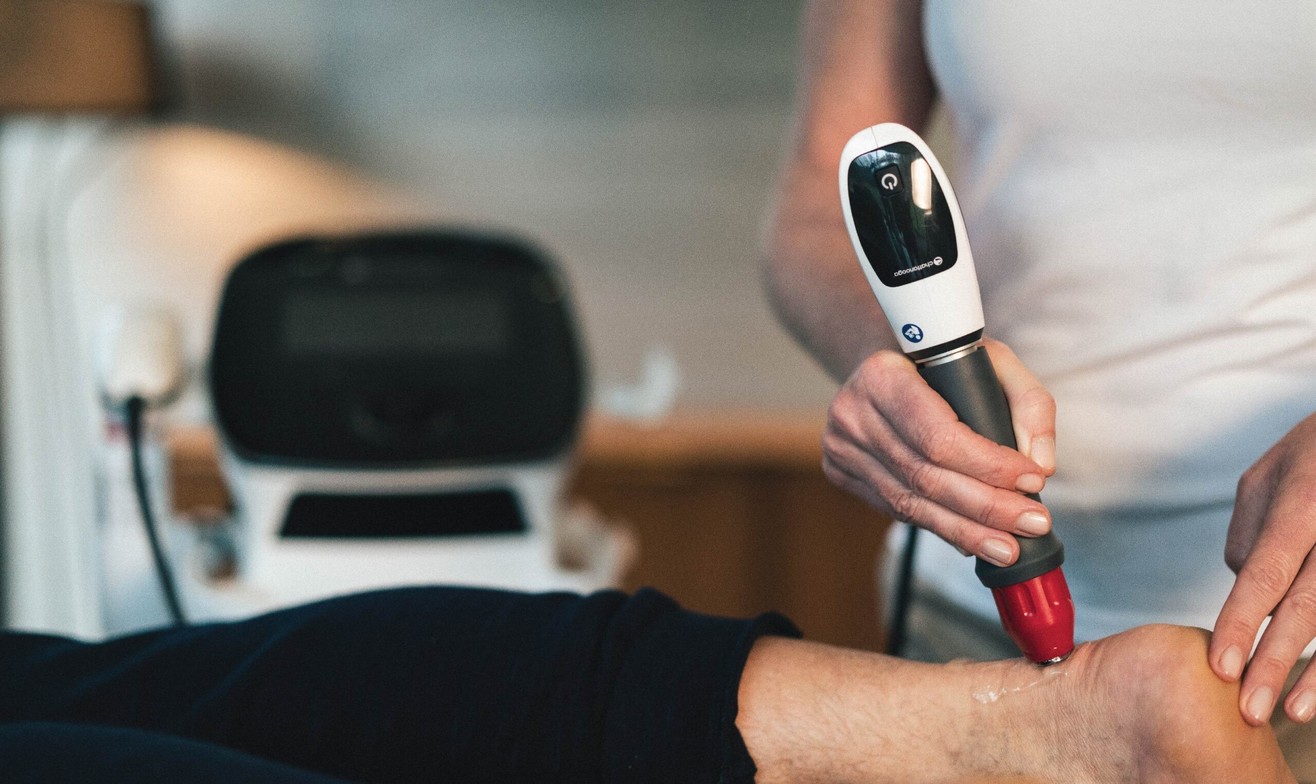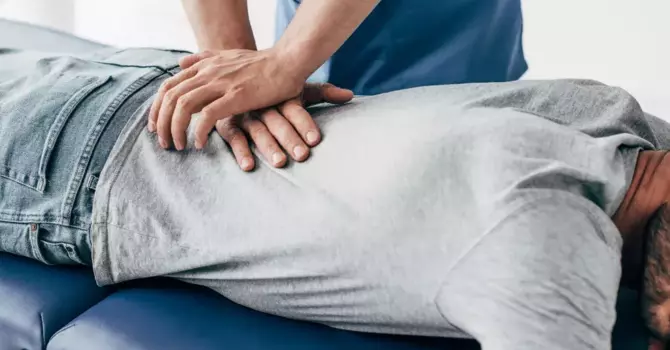
What is Shockwave Therapy?
Shockwave therapy, known professionally as Extracorporeal Shock Wave Therapy (ESWT), is a non‑invasive outpatient treatment that delivers high‑energy acoustic pulses into tissues using a handheld applicator. There are two primary types:
-
Focused Shockwave (F‑ESWT): Delivers concentrated energy to a precise depth—ideal for deep conditions like calcific tendinopathy.
-
Radial Pressure Wave (RPW): Produces diffuse energy near the surface—suitable for more superficial issues such as trigger points.
The therapy promotes healing through mechanotransduction (converting mechanical force into biological signals that stimulate blood flow, collagen, and tissue regeneration) and cavitation (formation and collapse of microbubbles that energize cells). Pain reduction occurs via depletion of pain‑mediators such as substance P, and activation of descending inhibitory pathways.
What Does It Treat?
ESWT is commonly used to treat a spectrum of musculoskeletal conditions, including:
-
Plantar fasciitis
-
Achilles and patellar tendinopathy
-
Calcific and non‑calcific shoulder (rotator cuff) tendinopathy
-
Lateral epicondylitis (tennis elbow)
-
Greater trochanteric pain syndrome and shin splints.
It’s also applied in:
-
Knee osteoarthritis and early femoral head osteonecrosis
-
Non‑healing fractures and diabetic foot ulcers
-
Low back pain in meta‑analysis of chronic cases
Emerging use includes spasticity reduction in neurological conditions such as post‑stroke or MS (mayoclinic.org).
Who Is It For?
Shockwave therapy is most appropriate for individuals who:
-
Struggle with chronic tendon or soft‑tissue conditions lasting ≥ 3 months
-
Have not responded to prior conservative treatments such as rest, physical therapy, orthotics, or injections
-
Are seeking a non‑surgical option, alomg side Chiropractic Care
-
Are generally healthy enough for outpatient treatment and can tolerate mild discomfort during treatment sessions
Some contraindications include acute infections, pregnancy, pacemakers in treated area, and local tumours—consultation with a qualified provider is essential.
What Results Can You Expect?
Pain Relief & Function
-
A meta‑analysis including 632 patients with chronic low back pain showed significant pain relief at both 4 and 12 weeks compared to controls (WMD ≈ –1.0 to –0.85) (BioMed Central, re-thinkingthefuture.com).
-
For tendinopathies (e.g. Achilles, rotator cuff), effect sizes are large (SMD 1.38 to 2.37), indicating meaningful pain reduction (bmcsportsscimedrehabil.biomedcentral.com).
-
Systematic reviews support moderate-to-strong evidence for plantar fasciitis, calcific tendinitis, Achilles tendinopathy, and early knee or hip bone‑related disorders; lateral epicondylitis evidence is mixed; patellar tendinopathy less supported (BioMed Central, British Journal of Sports Medicine, British Journal of Sports Medicine).
Structural Changes
-
Imaging studies found reduction in lesion size, such as calcium deposits (mean –8 mm) in tendons, decreased plantar fascia thickness, and small improvements in osteonecrosis lesion size (BioMed Central).
Timeline & Dosage
-
Treatment typically involves 5–10‑minute sessions, often 2–3 times per week over 3–6 weeks (re-thinkingthefuture.com, newhopephysio.com).
-
Results may continue to improve up to 12 weeks post‑treatment and sometimes persist to a year for plantar fasciitis (BioMed Central, Wikipedia).
Safety & Side Effects
-
Generally very safe with minor transient side effects (mild soreness, tiny bruising, or redness).
-
No serious adverse effects reported in high‑quality reviews (British Journal of Sports Medicine, academic.oup.com).
Research Sources & Further Reading
Here are several peer-reviewed studies and systematic reviews you can explore for deeper insight:
-
British Journal of Sports Medicine (2018): systematic review quantifying patient-rated pain reduction in lower limb conditions (Wikipedia).
-
Journal of Orthopaedic Surgery and Research (2023): meta‑analysis of ESWT in chronic low back pain (632 patients) (BioMed Central).
-
BMC Musculoskeletal Disorders (2020): meta‑analysis of imaging outcomes such as tendon calcifications and lesion morphology (BioMed Central).
-
BMJ Sports Medicine (2014): broad review of focused and radial shockwave efficacy across soft tissue injuries (British Journal of Sports Medicine).
-
BMC Musculoskeletal Disorders (2024): systematic review of ESWT’s effect on rotator cuff pain/function (RCT patients), showing modest pain benefit but inconclusive results on function (BioMed Central).
Quick Summary Table
| Aspect | Key Points |
|---|---|
| What it is | Non‑invasive acoustic therapy (focused or radial) |
| Mechanism | Promotes blood flow, reduces inflammation, modulates pain |
| Uses | Chronic tendon pain (Achilles, plantar fascia, shoulder, elbow), osteoarthritis, spasticity |
| Who it's for | Patients with chronic, recalcitrant musculoskeletal pain seeking conservative options |
| Timeframe | ~3–6 weeks usually; improvements often seen at 4 and 12 weeks; 4-6 sessions on average |
| Effectiveness | Moderate-to-strong evidence in several tendon and foot conditions |
| Safety | Mild and temporary side effects only (typically post-treatment soreness) |
Final Thoughts
Shockwave therapy offers a science‑backed, non‑surgical approach for many chronic musculoskeletal and related conditions, with good evidence for pain relief and some structural improvement. It’s especially beneficial for cases that haven’t responded to traditional conservative measures.
If you’re considering it, speak to our licensed providers trained in ESWT (Dr. Bassi and Dr. Alvarado), who can determine if you’re a good candidate and tailor parameters to your condition. Always ask about expected outcomes, contraindications, and whether focused or radial shockwaves are more appropriate.



